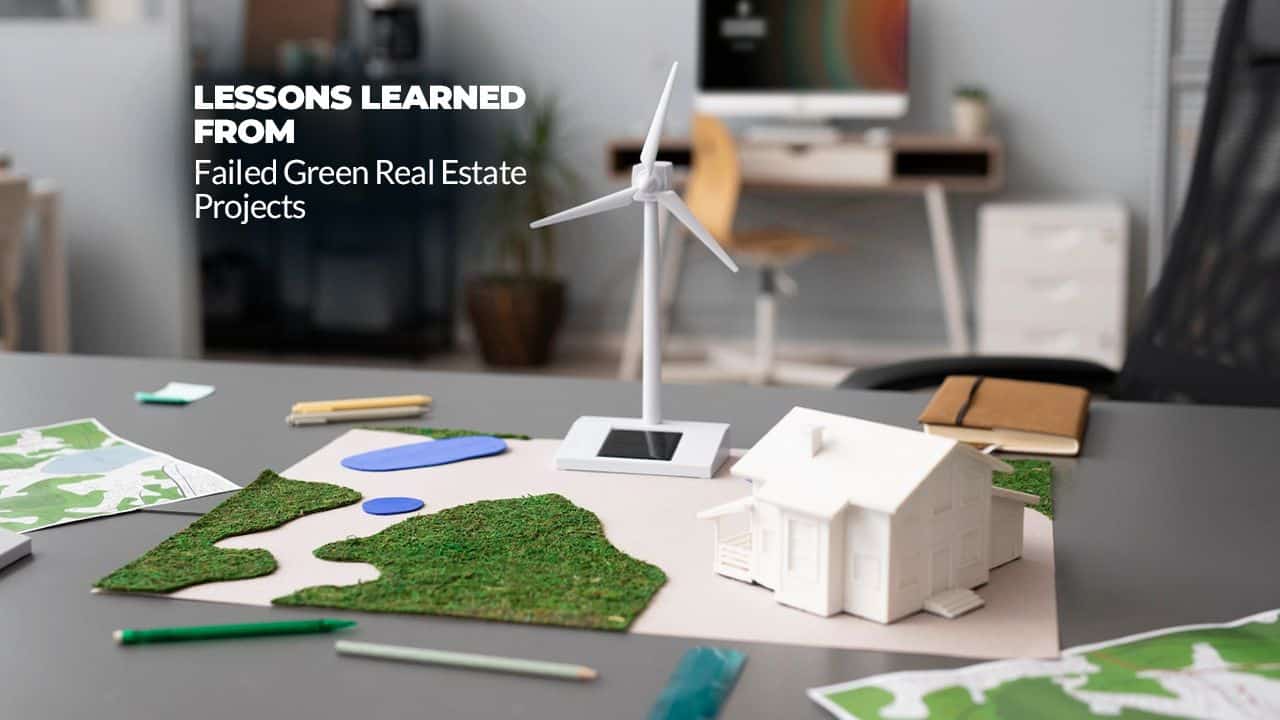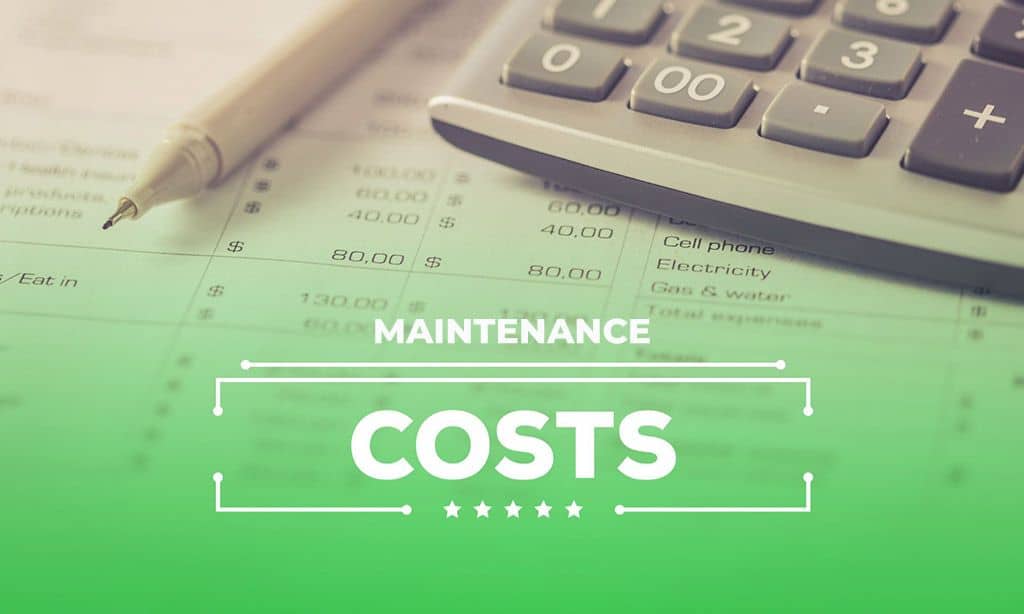Green real estate is more than just a trend; it is a necessity in today’s world. Sustainable development reduces environmental impact, promotes healthier living spaces, and can yield significant economic benefits. However, not all green real estate projects succeed.
Many fail due to a lack of planning, unrealistic expectations, or poor execution. While failures can be disappointing, they also provide valuable lessons for future projects.
This article dives into 12 lessons learned from failed green real estate projects worldwide. By understanding these pitfalls, developers, architects, and investors can make more informed decisions, avoiding costly mistakes and contributing to sustainable urban development.
1. Lack of Thorough Feasibility Studies
One of the most crucial lessons learned from failed green real estate projects is the lack of thorough feasibility studies. Many developers jump into projects with ambitious goals but fail to assess critical factors such as market demand, financial viability, and environmental impacts.
Feasibility studies are essential to understand the costs and potential returns of incorporating green technologies, such as solar panels, green roofs, or rainwater harvesting systems. Without this analysis, projects are often misaligned with market needs or exceed their budgets.
For example, a project might overestimate the willingness of buyers to pay a premium for eco-friendly features, leading to low sales or occupancy rates. Comprehensive feasibility studies also help identify risks and provide contingency plans, ensuring that projects are sustainable and profitable in the long term.
Proper planning at this stage can save significant resources and increase the likelihood of project success.
Key Takeaways
- Conduct a detailed market analysis before starting the project.
- Evaluate the costs and returns of green technologies.
- Identify potential risks and create contingency plans.
| Component | Importance | Impact on Success |
| Market Demand | High | Determines project feasibility |
| Cost of Green Tech | Very High | Affects overall budget |
| Risk Assessment | Critical | Reduces unforeseen issues |
2. Poor Integration of Green Technologies
Poor integration of green technologies is another common reason for the failure of green real estate projects. While developers may invest in sustainable features like solar panels, smart energy systems, or rainwater harvesting, these technologies often fail to deliver their promised benefits due to improper planning and execution.
For instance, installing solar panels without conducting an energy audit can lead to inefficiencies, while improper filtration in rainwater harvesting systems can make the water unusable.
Such issues not only increase operational costs but also frustrate residents, leading to negative feedback and reduced trust in the developer. Effective integration requires collaboration with experts who understand the technical aspects of these systems and their compatibility with the overall design.
It also involves thorough testing to ensure everything works seamlessly. Proper integration not only enhances the functionality of the building but also ensures long-term cost savings and environmental benefits.
Key Takeaways
- Ensure that green technologies align with the building’s design and functionality.
- Work with experts who understand how to integrate green systems effectively.
- Test systems before full implementation to identify potential flaws.
| Technology | Common Issues | Solution |
| Solar Panels | Over/under-sizing for energy needs | Conduct an energy audit beforehand |
| Rainwater Harvesting | Poor filtration system | Use advanced filtration technologies |
| Smart Energy Systems | Compatibility with existing utilities | Consult tech experts during planning |
3. Ignoring Community Needs
Ignoring community needs is a significant factor contributing to the failure of green real estate projects. Developers often focus solely on achieving sustainability goals, such as reducing carbon footprints or meeting LEED certifications, while neglecting the practical needs and preferences of the target audience.
For example, a housing project might prioritize eco-friendly materials and energy-efficient systems but fail to include basic amenities like parking, recreational spaces, or access to public transport. Such oversights make the property less attractive to potential buyers or tenants, regardless of its green credentials.
Engaging with the local community during the planning phase can provide valuable insights into their needs and expectations. This collaborative approach ensures that the project balances sustainability with functionality and livability, making it more appealing and successful in the market.
Key Takeaways
- Engage with the local community during the planning phase.
- Balance green features with functionality and accessibility.
- Incorporate amenities that align with the community’s lifestyle.
| Community Feature | Why It Matters | Example |
| Public Transport Access | Reduces reliance on private cars | Nearby bus/train stations |
| Recreational Spaces | Promotes well-being | Parks, playgrounds |
| Accessibility | Supports diverse users | Ramps, elevators, wide pathways |
4. Underestimating Maintenance Costs
Many green real estate projects fail because developers underestimate the long-term maintenance costs of sustainable features. While technologies like solar panels, green roofs, and geothermal systems offer significant environmental benefits, they also require specialized maintenance, which can be expensive.
For instance, solar panels need regular cleaning and inspections to maintain efficiency, while green roofs require pruning and water management to prevent structural damage. Developers who fail to account for these costs during the planning phase may find themselves burdened with unexpected expenses, which can strain the budget and reduce profitability.
To avoid this pitfall, it’s essential to include maintenance costs in the financial model and invest in durable, low-maintenance technologies. Training property managers and creating a maintenance schedule can also help ensure that systems remain functional and efficient over time.
Key Takeaways
- Include long-term maintenance costs in the financial model.
- Train property managers to handle advanced green systems.
- Choose technologies with proven durability and lower maintenance needs.
| System | Maintenance Requirements | Impact of Neglect |
| Solar Panels | Regular cleaning and inspections | Reduced efficiency |
| Green Roofs | Pruning and water management | Structural damage, leaks |
| HVAC Systems | Filter replacements | Poor air quality |
5. Overestimating Consumer Demand
Overestimating consumer demand is another lesson learned from failed green real estate projects. While there is a growing awareness of sustainability, not all buyers or tenants are willing to pay a premium for eco-friendly features.
Developers often assume that green properties will automatically attract high demand, leading to overpricing or misaligned marketing strategies. For example, a luxury green apartment complex may struggle to find buyers if its pricing exceeds what the market is willing to pay.
To address this issue, developers must conduct detailed market research to understand their target audience’s priorities and purchasing power. Offering a balance between affordability and sustainability can make the project more accessible and appealing. Educating consumers about the long-term cost savings and health benefits of green features can also help increase demand.
Key Takeaways
- Conduct surveys to understand your target market’s willingness to pay for sustainability.
- Offer a balance of affordability and green features.
- Educate buyers about the long-term cost savings of green technologies.
6. Poor Regulatory Compliance
Regulatory non-compliance is a major factor in the failure of many green real estate projects. Sustainability initiatives often involve adhering to complex local, national, or international regulations, such as building codes, environmental standards, or zoning laws.
Projects that fail to meet these requirements may face delays, fines, or even cancellations, resulting in significant financial losses. For example, a project might install energy-efficient systems that do not align with local utility regulations, requiring costly modifications. Developers must consult with legal and regulatory experts during the planning phase to ensure compliance with all applicable laws.
Staying updated on evolving regulations and incorporating them into the project design can prevent legal complications and enhance the project’s credibility.
Key Takeaways
- Consult with legal and regulatory experts during project planning.
- Stay updated on local and national sustainability regulations.
- Avoid cutting corners to save costs, as non-compliance can be expensive in the long run.
7. Lack of Skilled Workforce
Green real estate projects require a skilled workforce familiar with sustainable construction methods and technologies. However, many projects fail because of a lack of expertise among construction teams, architects, or engineers.
For instance, poorly installed solar panels or improperly constructed green roofs can lead to inefficiencies and increased costs. Developers must invest in training programs to equip their teams with the necessary skills and knowledge.
Partnering with experienced professionals who specialize in green design and construction can also ensure better execution. Additionally, using case studies or benchmarks from successful projects can provide valuable insights and set standards for quality.
Key Takeaways
- Invest in training programs for construction teams.
- Partner with experienced architects and engineers specializing in green design.
- Use case studies from successful projects as benchmarks.
8. Unrealistic Timelines
Unrealistic timelines are a common issue in failed green real estate projects. Developers often underestimate the time required for planning, procurement, and construction, leading to rushed work and poor execution.
Green technologies and materials often involve longer lead times, as they require specialized sourcing and installation. Setting overly ambitious deadlines can compromise the quality of the project and increase costs due to last-minute changes or rework.
To avoid this, developers must create realistic timelines that account for all stages of the project, from feasibility studies to final inspections. Incorporating buffer periods for unforeseen delays can also help ensure that the project stays on track without sacrificing quality.
Key Takeaways
- Develop a realistic timeline, factoring in all stages of the project.
- Build buffer periods to account for unforeseen delays.
- Use project management tools to ensure milestones are met.
9. Ineffective Marketing Strategies
Even the most sustainable green real estate project can fail without an effective marketing strategy. Developers often focus on the technical aspects of sustainability while neglecting to communicate their value proposition to potential buyers or tenants.
For example, emphasizing technical terms like “LEED-certified” without explaining the tangible benefits, such as lower utility bills or improved indoor air quality, can make marketing efforts less effective.
A successful marketing strategy should highlight the financial, health, and environmental benefits of the project in simple, relatable terms. Using digital platforms, social media, and virtual tours can help reach a wider audience and generate interest.
Key Takeaways
- Highlight the financial and health benefits of green features in marketing materials.
- Use digital platforms to reach eco-conscious buyers.
- Provide tours or virtual walkthroughs to showcase green technologies.
10. Overly Complex Designs
Complex designs often contribute to the failure of green real estate projects. While innovative designs can be visually appealing, they can also complicate construction, maintenance, and usability.
For instance, a building with intricate rainwater harvesting systems or unconventional layouts may face challenges in execution and daily operation. Developers should prioritize functionality and efficiency over aesthetic complexity.
Collaborating with experienced architects and designers who understand the practical aspects of green construction can ensure that designs are both innovative and functional. Testing designs through simulations or prototypes can also help identify potential issues before construction begins.
Key Takeaways
- Prioritize simplicity in design.
- Collaborate with experienced designers to ensure practicality.
- Test designs through simulations or prototypes.
11. Lack of Backup Systems
Many green real estate projects fail because they rely entirely on advanced sustainable technologies without incorporating reliable backup systems. For example, a building might depend solely on solar power for energy needs, but during prolonged cloudy weather or equipment failures, the lack of backup energy sources can disrupt operations.
Similarly, rainwater harvesting systems without proper municipal water connections can leave residents stranded during dry spells. Ignoring backup systems creates vulnerabilities that can frustrate users and tarnish the project’s reputation.
To ensure reliability, developers must integrate hybrid systems, combining green technologies with conventional methods for continuous functionality.
Key Takeaways
- Always integrate a secondary or backup system for critical utilities.
- Use hybrid systems that allow a smooth transition between green and conventional methods.
- Conduct stress tests to identify potential weaknesses in system design.
| Backup Area | Risk Without Backup | Solution |
| Energy (Solar Power) | Power outages during bad weather | Hybrid system with grid connection |
| Water (Rainwater Harvesting) | Water scarcity in dry periods | Connection to municipal water supply |
| Smart Systems | System failure | Manual overrides or redundancy systems |
12. Ignoring Climate Adaptation
One of the critical lessons learned from failed green real estate projects is the lack of focus on climate adaptation. While these projects aim to reduce environmental impact, many fail to consider the future implications of climate change, such as rising temperatures, increased flooding, or extreme weather events.
Ignoring these risks can lead to structural damage, increased maintenance costs, and dissatisfaction among residents. For example, a project in a flood-prone area may fail if it does not include proper drainage systems or elevated designs to mitigate water damage.
Climate adaptation measures not only enhance the longevity of the project but also increase its market value by showcasing resilience.
Key Takeaways
- Assess climate risks during the project’s planning phase.
- Incorporate flood-resistant materials, elevated designs, and advanced drainage systems.
- Use heat-resistant and energy-efficient materials in regions prone to rising temperatures.
- Regularly update infrastructure to adapt to evolving climate conditions.
| Climate Risk | Potential Impact | Solution |
| Flooding | Structural damage, mold growth | Elevated designs, flood barriers |
| Rising Temperatures | Increased energy usage | Heat-resistant materials, insulation |
| Extreme Weather Events | System failures, safety risks | Reinforced structures, backup systems |
Takeaway
Failed green real estate projects provide invaluable lessons for the future of sustainable development. By addressing common pitfalls such as poor planning, lack of expertise, and unrealistic expectations, developers can improve the success rate of their projects.
The 12 lessons outlined in this article serve as a roadmap for creating green real estate that is not only environmentally friendly but also financially viable and socially impactful.
Sustainable development is a journey, and learning from past failures is a critical step toward building a greener future.












































